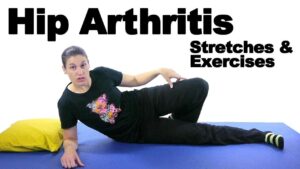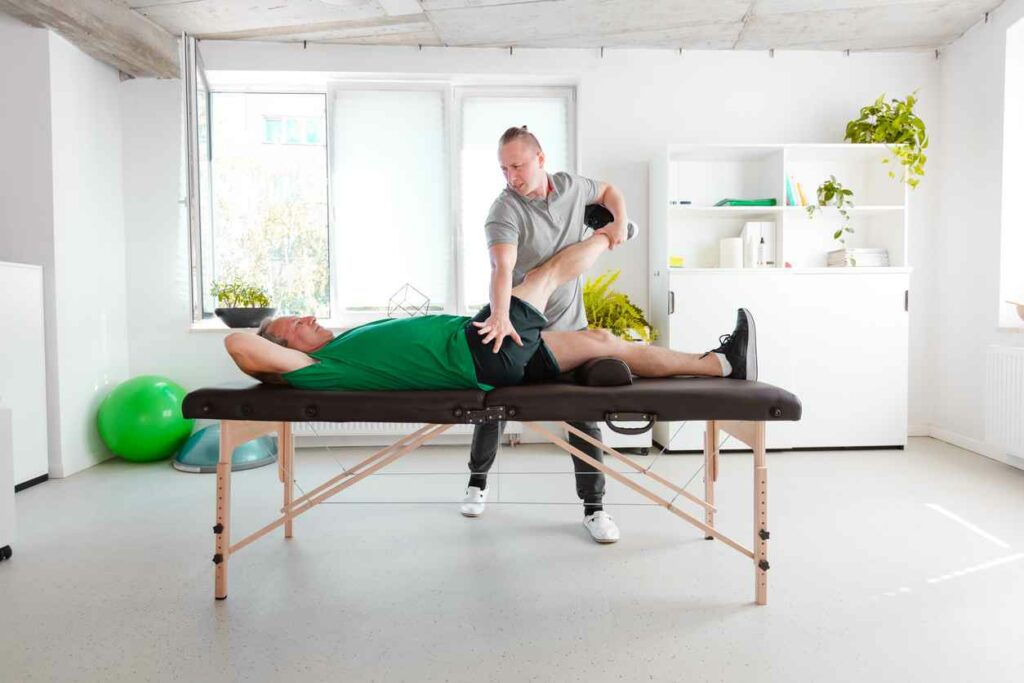If you are one of the millions of Americans who suffer from hip arthritis, you know how debilitating it can be. Not only is it painful, but it can also make everyday activities difficult to perform. Thankfully, there are many physical therapy treatments that can help ease the symptoms of hip arthritis. In this blog post, we will discuss some of the most common physical therapy treatments for hip arthritis and how they can help improve your quality of life.
Contents
What Is Hip Arthritis?

Arthritis is a condition that causes inflammation in the joints. There are many different types of arthritis, but hip arthritis is one of the most common. This type of arthritis can cause pain and stiffness in the hip, which can make it difficult to move around.
Physical therapy is often recommended as a treatment for hip arthritis. Physical therapy can help to improve the range of motion, reduce pain, and increase strength. It can also help you to avoid or delay surgery.
What Kind Of Physical Therapy is Involved in Hip Arthritis?

There are various types of physical therapy that are involved in hip arthritis that is as follows:
Exercise
Exercise is an important part of physical therapy for hip arthritis. A physical therapist can design a personalized exercise program to help reduce pain and improve the range of motion. The types of exercises prescribed will depend on the severity of your arthritis.
Stretching Exercises
These exercises are designed to maintain the range of motion in your hip joint and to reduce stiffness. For example, you may be asked to do quadriceps stretches, hamstring stretches, and gluteal stretches.
Strengthening Exercises
These exercises are designed to improve the strength of the muscles that support your hip joint. For example, you may be asked to do leg raises, mini-squats, or clamshells.
Aerobic Exercise
This type of exercise will help to increase your overall fitness level and reduce pain and inflammation. For example, walking, biking, or swimming are all excellent aerobic exercises to try.
Weight Management
Keeping your weight at a healthy level will help to reduce the amount of stress on your hip joint. For example, if you are overweight, losing weight can help to decrease the amount of pain you experience.
Manual Therapy
Manual therapy is a type of physical therapy that uses hands-on techniques to reduce pain and improve the range of motion. For instance, your physical therapist may use massage, mobilization, and manipulation to help relieve pain and improve joint function.
Mobilization
Mobilization is a type of manual therapy that involves gently moving the joint in order to increase the range of motion. For example, your physical therapist may use mobilization techniques to help you move your hip joint through a greater range of motion.
Modalities
Modalities are treatments that use heat, cold, electrical stimulation, or ultrasound to reduce pain and stiffness. Your physical therapist will determine which modalities are best for you based on your symptoms.
Walking
Walking is a great way to keep your hips healthy and strong. It can also help relieve pain and stiffness associated with hip arthritis. Bone and joint specialists suggest that walking is one of the best forms of exercise for hip arthritis. Walking increases blood flow to your cartilage, which gives it the nutrients needed to provide cushioning for your joints.
Thus these are a few physical therapies for hip arthritis and if you have any pain or swelling in your joints consult an orthopedic specialist.
What Are the Benefits of Physical Therapy?

Physical therapy can offer many benefits for people with hip arthritis. They are as follows:
Reduce pain
Physical therapy can help to reduce the pain associated with hip arthritis. This is done through a variety of methods, such as exercises, stretching, and massage. Hip arthritis can be a very painful condition. Physical therapy can help to reduce your pain by teaching you exercises that stretch and strengthen the muscles around the joint. They can also teach you how to properly use heat and cold therapies.
Improve range of motion
Physical therapy can also help to improve the range of motion in the hip joint. This is important for maintaining mobility and avoiding further joint damage. For instance, physical therapists can teach you exercises that stretch the muscles and ligaments around the hip joint. They can also show you how to use devices such as canes and walkers to help you get around.
Improve joint function
In addition to reducing pain and improving range of motion, physical therapy can also help to improve joint function. This means that the joint will be able to move more easily and with less pain.
Delay the need for surgery
For some people, physical therapy can delay the need for hip surgery. This is often the case for people with milder forms of hip arthritis.
Rehabilitate after surgery
For people who do require hip surgery, physical therapy can be an important part of the rehabilitation process. Physical therapy can help to improve the range of motion, strength, and joint function after surgery.
Reduce the risk of falls
One of the most serious complications of hip arthritis is the risk of falls. Falls can often lead to serious injuries, such as fractures. Physical therapy can help to reduce the risk of falls by improving balance and coordination.
Build strength and endurance: The hip joint is a weight-bearing joint, which means that it supports the body’s weight. This can put a lot of strain on the joint, causing pain and inflammation. Physical therapy can help to build strength and endurance in the muscles around the hip joint, which can help to reduce the strain on the joint.
Help you maintain your independence
As hip arthritis progresses, it can become more and more difficult to do everyday activities. Physical therapy can help you maintain your independence by teaching you how to properly use assistive devices, such as canes and walkers. They can also teach you exercises that will help to keep your muscles strong and your joints mobile.
Prevent further joint damage
Inflammation from hip arthritis can damage the cartilage that cushions the joint. This can lead to further pain and stiffness. Physical therapy can help to reduce inflammation and prevent further joint damage.
Improve your quality of life
Hip arthritis can be a debilitating condition that can make it difficult to enjoy your everyday activities. Physical therapy can help improve your quality of life by reducing pain and inflammation, and by helping you maintain your independence.
Can Physical Therapy make hip arthritis worse?
For some people, physical therapy is not recommended at all because it can make their arthritis worse. The reason is that when you have hip arthritis, the range of motion in your hip joint is already limited. This means that adding more movement to the joint through physical therapy exercises can actually damage the cartilage instead of helping it.
That being said, there are many people who do benefit from physical therapy for hip arthritis. The key is to work with a physical therapist who is experienced in treating this condition and who can tailor an exercise program that is right for you.
Conclusion
It may be concluded that hip arthritis physical therapy is an effective means of treating the condition. The therapist can help to improve the range of motion and flexibility of the hip, as well as reduce pain and inflammation. In addition, physical therapy can help to prevent further damage to the hip joint and surrounding tissue.
Physical Therapy help patients recover from pain. If you’re experiencing Back pain, Shoulder pain, Knee pain, Neck pain, Elbow pain, Hip pain, or Arthritis pain, a physical therapist at MantraCare can help: Book a physiotherapy session.


